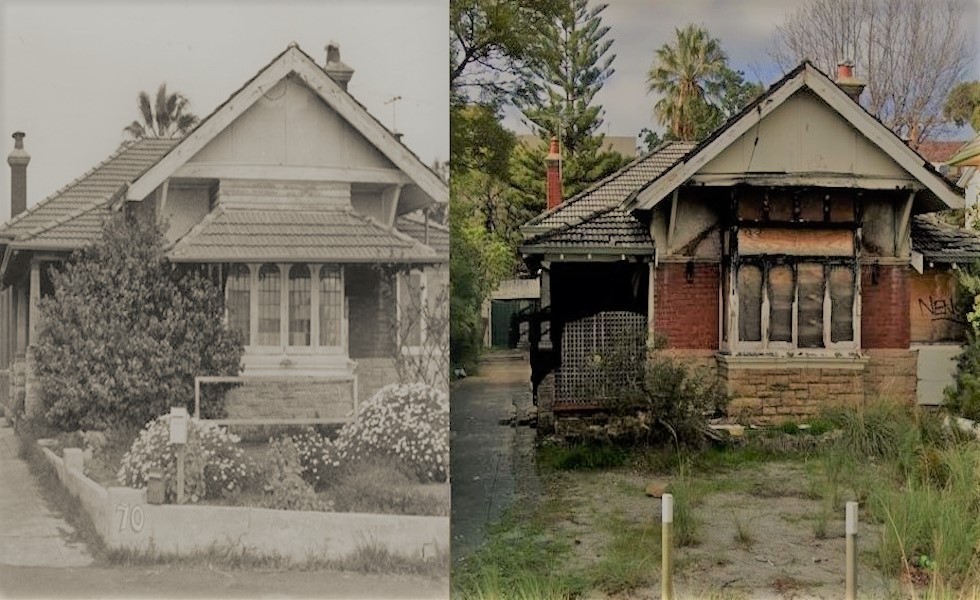Disturbing content warning: This article contains extremely explicit material relating to physical and sexual violence.
One of the things we take for granted since the rise of social media is the ability to simply stay in touch with people. The good old World Wide Web is ubiquitous now, and anyone even remotely tech-savvy – and who has made their peace with giving all their personal details to the Zuck – is capable of keeping up relationships with anyone of a similar attitude from their past regardless of time and distance apart.
It’s worth keeping in mind that this is a whole new thing – it wasn’t very long ago that if someone left the country, or even the state, they were more or less out of the picture, unless you were a keen letter-writer or okay with onerous international phone charges (overseas phone calls used to be crazy expensive. So too were mobile calls, come to think of it).
But all that’s changed now, and I – and you, at a guess – am a node in a network of people who may not have clapped eyes on each other in years but are still interacting on the reg thanks to the evil miracle of Facebook, Twitter, and what have you. It’s weird that it’s normal. Which is a long way of saying that one particular node in my network fired off a metaphorical signal flare to alert a bunch of us that he’d learned something weird about a house we all shared in West Perth, Western Australia, over 20 years ago.
The Thomas Street House
You ever see The Young Ones or Dogs in Space? Or read He Died With A Felafel In His Hand? Then you’ve got a fair idea of what the Thomas Street House was like. 70 Thomas Street was once a beautiful old place, with high ceilings, an open fireplace, and jarrah floors, and in the late ‘90s this stately old joint was home to a mixed bag of goths, punks, and weirdos. Six people lived in four bedrooms, which made the rent incredibly cheap. This was very important at that time, when unemployment (or study, which is just unemployment with extra duties) was the default setting for young people in Western Australia. I think only two household members had regular employment, and the rest of us were on the dole or Austudy (I was grinding out my last year of Film Studies at Curtin Uni).
This left plenty of time for extracurricular activities, though. We were a motley bunch of goths and alternative types, so we were clubbing four of five nights a week, and partying at home the rest of the time. There was a lot of booze and a lot of drugs. Our house parties were legendary. One year my birthday celebration went for three days – housemate Sven managed to fall through the ceiling, showering the couple canoodling in the bedroom below him with plaster (a roof beam stopped him from crashing completely through, and crushed his balls in the bargain).
It was wild, and while wild is fun, it can’t last. In 2000 the household dissolved, and we all went our separate ways. Then a couple weeks ago my buddy Mark, who lived there with his partner at the time, Alyssa, tagged us all in a Facebook post and alerted us to the fact that, unbeknownst to us, we had been living in a house where serial killer Eric Edgar Cooke murdered 24 year old social worker Constance Lucy Madrill in 1963.
Enter The Night Caller
Eric Edgar Cooke was a long-time petty criminal, but in 1958 he graduated to murder. From then until his eventual capture in 1963, he was a prolific serial killer, committing eight murders and at least 22 violent assaults. They were attacks of opportunity, for the most part: hit and run attacks on pedestrians, stabbings, shootings. A habitual burglar, some of his victims were killed when they awoke to find him in their homes. Others died as they slept. On Australia Day, 1963 he hit some kind of frenzied peak, shooting five victims; two died.
Cooke’s varied modus operandi meant that the fact that a serial killer was operating in Perth was slow to emerge; he used rifles of different calibers, his victims were randomly chosen, and he drove stolen cars that he would return before the owners awoke in the morning. When he was eventually caught, it was because he returned to retrieve a rifle he’d hidden in some bushes – the police had found the weapon, replaced it with a disabled duplicate, and staked out the site. He was hanged at Fremantle Prison on October 26, 1964 – the last man executed in WA before the eventual abolition of capital punishment in 1984.
There’s more to it than that, of course. Cooke’s crimes are fascinating if you’re into that sort of thing. Robert Drewe’s memoir The Shark Net, which goes into the wider societal effects of Cooke’s rampage, is your go-to book, and Estelle Blackburn’s Broken Lives is also highly regarded. I’m not a particular fan of Stan’s four-part documentary series After the Night, which in terms of tone feels like an extended A Current Affair segment with all that entails, but if you want a primer, that’s probably the most readily accessible.
Everyone in or from Perth, and probably Western Australia as a whole, knows about Cooke, who the press dubbed The Night Caller and The Nedlands Monster. The accepted wisdom is that Cooke’s spree turned Perth paranoid, changing it from a place where car keys were left in the ignition and back doors left unlocked to a town with bars on its windows and fear in its heart. Maybe; it’s interesting to speculate that, even before it was known that a serial killer was using Perth’s Western suburbs as a hunting ground, fear of a predator spread through the herd on some kind of subliminal level, changing the culture permanently.
But forget the big picture cerebral wool-gathering. Let’s get specific. Let’s talk about Constance Lucy Madrill.
This is the section to skip if you’re not feeling up to it.
Constance Lucy Madrill was 23 or 24 when she died. She was survived by her mother, Constance Alberta Sargent Madrill, who lived until 1991, although her father, Michael Joseph Madrill, died in 1942, when she was two or three. I wonder a lot about Constance Lucy Madrill. Biographical information is thin on the ground. She may have been born in the Northern Territory, according to Ancestry.com. She may have been born in 1938 or 1939 – there’s no birthdate record that I can find. She was apparently a social worker. Other than that, all we know about her is how she died.
On the night of February 16, 1963, Eric Edgar Cooke broke into 70 Thomas Street, West Perth. Finding Constance in her bedroom, he strangled her with the electrical cord from her bedside lamp, then raped her corpse. Stripping her naked, he dragged her outside onto the neighbour’s lawn, then violated her with a whisky bottle. He arranged her body with the bottle cradled in her arms for some poor bastard to find in the morning.
Over the past couple of weeks, with a scratch map of the old house and a lot of arguments over how the house in 1963 differed from the house in 1999, we figured out exactly which bedroom Constance was murdered in – the back bedroom on the left-hand side.
My bedroom, of course.
Caught in the shark net
It’s a weird feeling, folks.
The house was not haunted. There were no eerie feelings late at night, no cold spots, no hairs rising up on your hackles for no perceivable reason. None of that bullshit. The world is old and people die all the time; our cities are built on bones and you are probably right now sitting within spitting distance of a spot where someone breathed their last. If you live in an old house or building, there’s no chance that place has led a corpse-free life. We’re well-insulated from the realities of death these days, but death is all around us. Death is normal.
Still: murder. Serial murder.
Thank Christ we didn’t know.
Not because it would have squicked us out; oh no. We would have milked that shit for all it was worth. A bunch of spooky kids and horror movie obsessives discovering that a serial killer had offed someone in their house? We would have dined out on that for ages, because we were in our 20s and all rather self-obsessed and the tabloid glamour and subcultural cache of living in an actual murder house would have blinded us to the sordid horror of what had happened here, which was the awful, painful death of a young woman who in no way deserved what happened to her.
Eric Edgar Cooke didn’t just kill Constance Lucy Madrill, he obliterated her. We know more about Cooke than we ever will about Constance, and everything we do know about her is directly connected to the man who murdered her. He has supplanted her, and in taking away whatever she might have done or become, combined with his own notoriety, killed her in a more complete way than should be possible. In an age where countless reams of data about almost any topic or person are a mouse click away, Constance has been reduced to a few sketchy lines of biographical information, and the lurid details of her death.
And we would have used the wild coincidence of living in the place of her murder for shits and giggles.
I don’t blame us – the hypothetical us of the past. Empathy is a skill, not an inherent trait, and I know how strong my empathy muscles were then compared to now. Call it maturity if you like (knowing myself, I wouldn’t), but I can imagine my reaction to getting the news 20-odd years ago and compare it to my reaction two weeks ago and, well…
Thank Christ we didn’t know.
70 Thomas Street today
It’s gone.
Some of the people from that household still live in Perth and a couple of us are in Sydney, but we’ve scattered. Time and life does that to every crew no matter how tight; that’s just the way it goes. But living in that house left a mark on us; it was one of those iconic shared house situations that starts taking on the aura of urban legends as stories and anecdotes get told again and again and again: that party, that fight, that night, that trip. Which meant that every so often you’d get a report about the old house. One year it was boarded up, derelict. A couple years later? Gutted by fire. Then, in 2020, finally demolished – it had sat empty for five years and had been left to deteriorate so that, despite being heritage listed, it could be torn down to wide the road on which it sat.
Maybe that’s no great loss and maybe, if we were ignorant of what had happened there, me and the old crew might have simply toasted the ramshackle old house we used to live in and thought no more about it.
But now we do know, and what I keep coming back to is that there’s one less piece of evidence that Constance Lucy Madrill ever existed. The place where she lived and ultimately died is gone – floors she walked on, walls she touched. How wide will that road be? Will her room – and mine – soon be under macadam?
It is, again, a weird feeling. The world has forgotten Constance, except for her place on a list of victims along with seven other names. But I won’t forget now. I don’t think I could if I tried.



